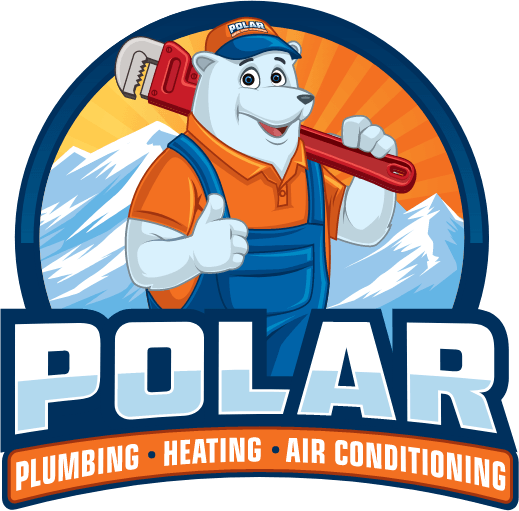
1.Improper Thermostat Setting
One of the first things that you should check when you sense cold air blowing from your furnace is the thermostat. It should be set to “Auto.” If the thermostat is set to “On” and not “Auto,” then your fan will continuously run without producing any heat. The “Auto” setting ensures your fan only runs during the regular heating process.
2. Empty Oil Tank
If your furnace operates on oil, you might have just run out of fuel. The blower will keep circulating cold air even when the burners are not lit up to produce heat.
3. Issues With Computerized Controls
Some newer furnaces have an electronic control panel that will need to be restarted to reset the system. Using the power switch, simply turn off the furnace, wait for some minutes and then turn it back on. If the rebooting doesn’t solve the issue, you need to contact the technicians from Polar Plumbing, Heating & Air Conditioning.
4. Overheated Furnace
When the furnace overheats, the burners shut down. One of the main reasons for overheating is the failure to change the air filters. Clogged air filters compromise the air circulation, leading to overheating of the furnace. Change the filters and restart your furnace to see if the problem will go away. If not, you require professional assistance. The problem is likely a mechanical failure.
5. Extinguished Pilot Light
Some furnaces, especially older ones, might have a constant pilot light issue. It may have gone out due to a gust of air from someone working nearby. If you are confident in relighting it, then do so following the instructions in the user’s manual. If it goes out again after a while, then there is probably a more complicated issue that requires professional expertise.
6. Valve Problem
If the pilot light is not lighting up, you might have a faulty gas valve. Check if it is on. If so, then it could be dirty, so clean it up to clear dirt and debris for proper flow of gas. Also, clean the pilot light while you’re at it.
7. Faulty Thermocouple
The issue of a continuously extinguishing pilot light can also be caused by a faulty thermocouple. This is the sensor that controls the ignition and the gas valve. Although this is normally a simple repair, it will require you to call our Newburgh team to either adjust or replace the device.
8. Clogged Oil Filter
The filter of an oil-fired furnace, just like the air filter of a gas-fired system, can get clogged by dirt and debris. When this happens, the ignition could be affected. Consequently, there will be no heating. Although you can replace or clean the filter yourself, the process can be quite messy. You can call us, and we will fix the issue promptly.
9. Faulty Electronic Ignition
Newer furnaces have electronic ignitions that might need to be adjusted or replaced if the part is faulty. Systems with hot-surface ignition or intermittent pilot require the attention of furnace technicians like us who know how to handle the issue.
10. Compromised Flame Sensor
Your system might blow warm air when you turn it on and then suddenly turn cold. A furnace flame sensor that is worn out or covered with grime could be the reason behind this. The flame sensor will keep shutting off unless you call in HVAC professionals to come and repair your furnace.
11. Dirty Oil or Gas Burner
The gas or oil burner is bound to get dirty as it will accumulate grime and dust if neglected. When this happens, it will have trouble igniting, and there will be cold air blowing from your system. Your system requires being professionally cleaned to solve this problem.
12. Air Filter Issue
Air filters get dirty with time from accumulating dirt from the indoor air circulation. When they get dirty, they restrict airflow into your furnace, causing it to run longer and harder while attempting to provide adequate heat. This will cause the furnace to overheat, and a limit switch will automatically shut off the burners to cool it and prevent possible damage. Change your air filters regularly because if you don’t, the frequent overheating might lead to the costly replacement of a damaged heat exchanger.
13. Inadequate Gas Supply
Sometimes your furnace might automatically lock itself down for safety reasons when it is getting an insufficient amount of gas required to warm the air. This may be the result of a severed line. In such a scenario, you need the help of our Newburgh technicians to handle the issue professionally.
14. Clogged Condensate Drain Lines
New models of high-efficiency furnaces are equipped with condensate drain lines. The purpose of condensate drain lines is to drain water created in the furnace during the heating process. When these drain lines are clogged, they almost always trigger a switch that is meant to prevent the lighting up of burners. The result is cold air coming from your furnace. If clogged, these lines need to be professionally cleaned.
15. Leaking/Damaged Air Ducts
The cause of cold air coming from your furnace could be the result of hot air exiting through holes in the ductwork. If there are large holes in your air ducts, then cold air from your attic or crawlspace might get into the ductwork. This can be solved using aerosol duct sealing. An inspection by an expert can help determine whether the ducts that carry air throughout the building are leaking.
Your Dependable Newburgh Professionals
When you rely on our experience and keep to a regular maintenance schedule, you can avoid most, if not all, of the above-mentioned problems. This will keep your furnace running at an optimal level and drastically reduce the likelihood of breakdowns that require major repairs. However, even with the best maintenance, the system will eventually get old and stop performing as well. When that occurs, the best remedy is to call us to schedule a new system installation.
